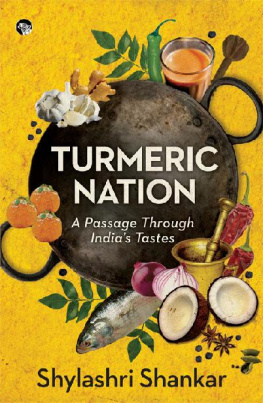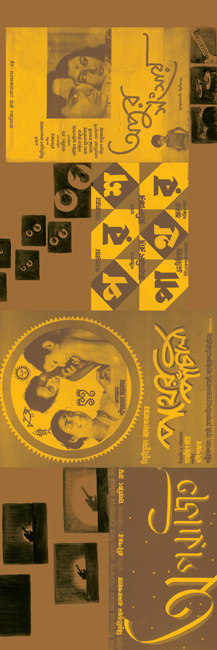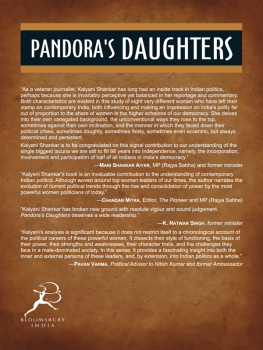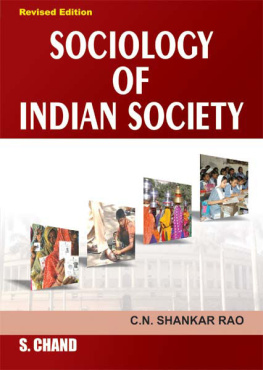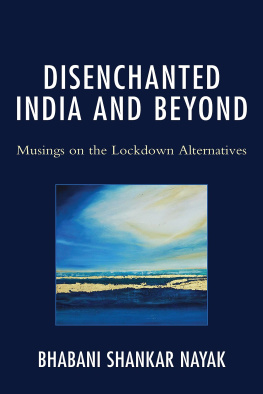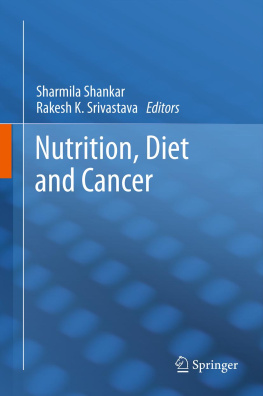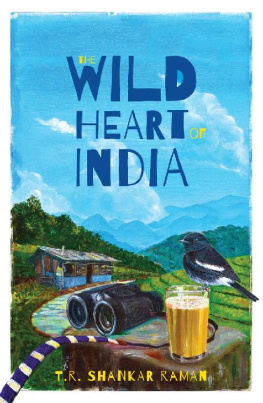Shylashri Shankar is a senior fellow at the Centre for Policy Research, New Delhi. In addition to regular columns on food, books, gardening and democracy, she has written on judicial activism in India and Sri Lanka, cross-judicial engagement on secularism in India, Sri Lanka and South Africa, ethnic conflict in South Asia and the Middle East, and the politics and impact of anti-poverty programmes. Her published books include Scaling Justice: Indias Supreme Court, Anti-Terror Laws and Social Rights and (with Raghav Gaiha) Battling Corruption: Has NREGA Reached Indias Rural Poor?
INTRODUCTION
How we experience and think about what we eat is a large part of the daily rhythm of our lives. With our family and friends we discuss how delicious or dreadful a dish was in a new restaurant, comment on a cooking show like The Great British Bake-Off or Masterchef, squabble over where we can get the best bhel puri, chaat and kebabs. Rich or poor, we compete to create the most succulent banquets at our family weddings. The rich fly in the best chefs from different parts of India and the world to offer authentic pasta, sushi, chole, biryani and salans. Others bring halwais or renowned cooks from the old city or a famous halwai to make kebabs, Awadhi cuisine or Old Delhi street food.
We are lucky enough to live in an age where for more of us, our relationship with food is about choice and less about eating to live. As democracy mingles with economic progress and global connectivity, we in India are slowly embracing new ways of thinking about ourselves in relation to food. Witness the blogs, food festivals, and supplements in newspapers and magazines on new restaurants, celebrity chefs and food habits. Writers like Vir Sanghvi, Saurish Bhattacharya, Pushpesh Pant, Rashmi Uday Singh, and K.T. Achaya, among others, have framed our relationship with food in myriad ways.
A generation or two ago, our individual identity was much more defined by our social roles and relationshipshence the emphasis on sex; today our identities are much more strongly linked to what we consume, says Jeremy Iggers in Philosophy and Food. This holds true for us in India too.
SHAPE OF AN IDENTITY
How do we talk about Indian identity in connection with food? This is the question I faced when an acquaintance asked what I was working on. Pat came my reply, a food biography of India. But when I began explaining what I planned to write, I sounded incoherent. It is almost impossible to talk about Indian food, or even regional food. What is South Indian food? It could be Malabar, Chettinad, Tamilian Brahmin, Reddy food, Kamma dishes, Dalit dishes, Andhra, Telangana, Kannadiga, Coorgi, and so on. Just as North Indian food includes Awadhi, Rajasthani, Mughlai, and Punjabi, and Central Indian food is from Bihar, Chhattisgarh, Jharkhand, Madhya Pradesh and Orissa, and East Indias cuisines include West Bengal, Meghalaya, Nagaland, Sikkim and so on.
To write a biographical account of food in a country as diverse, as vast, and as hybrid as India is daunting. I turned to Colleen Taylor Sens Feasts and Fasts: A History of Food in India, to see how she approached Indian food. After commenting on the diversity and the multiple layers introduced by history and geography to the palimpsest of Indian cuisine, in which no layer ever hides or erases what has gone before, Taylor Sen askshow did whatever we call Indian food come to be that way? Using reports from archaeological discoveries, travellers accounts, philosophical and religious texts, she traces the history of Indian food from prehistoric times to the present. Her answers highlight the pluralism of Indian food. It is no exaggeration to say that an example can be found to refute any statement made about Indian food, concludes Taylor Sen. Despite its shortcomings, a regional survey is the most practical way of describing the diversity and richness of the subcontinents cuisine.
Pluralism, then, is at the core of cuisine in India, making food here echo Naipauls description of the country as a million mutinies. It makes discovering Indian gastronomic culture almost as impossible as finding the Holy Grail.
CULINARY CIRCULATION
Alberto Capatti and Massimo Montanaris Italian Cuisine: A Cultural History, is a good pointer to how one can study food in a country characterised by diverse regional cuisines. They uncover Italian cuisine not in recipes or treatises but in the dense network of customs, habits and styles of living. The duo point out that there were intense culinary exchanges between regions sustained by the circulation of texts, techniques and products. A national culture developed from a Roman legacy enriched by imports from the Far East and the Near East, and was shaped significantly by the Fascist regime in the 1920s and 30s. It was also carried by Italian emigrants to other parts of the world.
I think we can make a similar argument for an Indian culinary culture. The culinary patterns were developed from ancient texts such as the Atharva Vedas exposition of Ayurveda and the Greco-Arabic humoral theory advocating similar notions of balance and equilibrium. Then came the culinary exchanges between Indian kingdoms and the Middle East and Europe through trade, that were enriched and hybridised by Chola, Maurya, Persian, Mughal and colonial legacies. These developments spread similar types of cooking techniques to some geographies such as the Punjab, Uttar Pradesh and the Deccan. But other groups like Tamilian Brahmins remain rooted in cooking techniques that cannot be easily attributed to a particular historical lineage. Cuisines rest, heavily or lightly, on layers of history. We shall see this play out in the essay on You are the way you cook.
For the Italians and the French, cuisine took those nationals beyond the regions to a larger sense of the collective self. For the British too, colonialism brought the Englishman to foreign shores where he (more accurately the memsahib) attempted to create a taste of home with foreign ingredients.
Do we Indians have a sense of collective self when it comes to cuisine? Or did the hierarchy of the caste structure and the social control exercised by the higher over the lower castes create barriers to culinary exchanges? The essay on Dalit foods captures the horrifying extent of social control over what Dalits could afford to eat. Higher-caste landlords paid their Dalit agricultural labourers with barnyard millet that was also fed to the cattle. Social anthropologist James Laidlaw is right that while nowhere in the world are food transactions socially or morally neutral, nowhere in the world are the social consequences so political or the moral implications as powerful as they are in South Asia. Food transactions create and mark hierarchical relations within Hindu castes, and also draw the lines between Hindus, Muslims, Christians, Jains and Buddhists.
FOOD MOSAICS
With such chaotic connections between food and identities, how do we approach the topic? One way is through the concept of a mosaic bundling, a term I have borrowed from the Canadian philosopher Charles Taylor. Each of us comes from a particular context; we grow up within a culture that may or may not be infused with habits created by caste, religion, geography, and class. Add to this the experiences you have while you travel within the country or abroad for leisure, study or for work. Then add your experiences with the food in your friends houses, especially those who belong to other cultures, religions and regions. This is your mosaic.
I am a Tamil-speaking person who grew up in Nagpur, Hyderabad and Delhi, who went on to study in England and worked in the US, and who after the initial eighteen years of vegetarian food switched to eating meat in these foreign climes. I am now back in the land of my birth and tend to favour vegetarian food. What am I? The mosaic that is my bundle would include particular notions of purity and pollution informed by upbringing (i.e. cultural mores, though others might term it as caste), a hankering for the tastes of my childhood (upma and kootu), and a nod to my decades spent abroad. For instance, I cannot eat Indian food on a hot summer evening and instead have cold beetroot soup, spinach quiche, or a cold pasta salad. Your mosaic bundle might have a strong religious flavour, or a geographical one.


